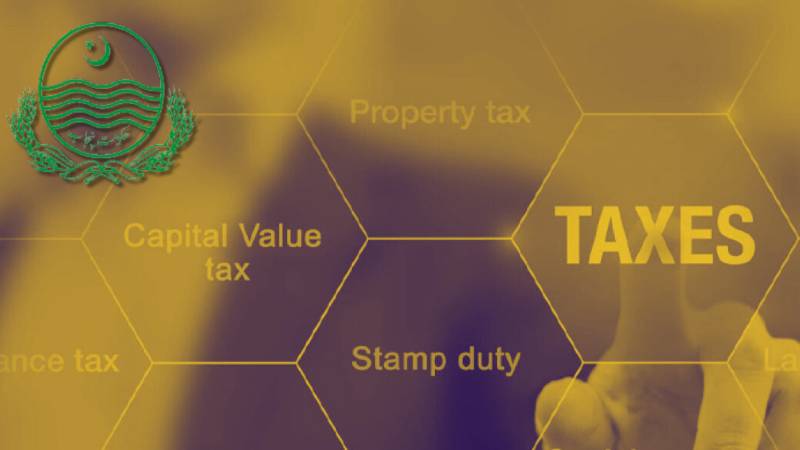
With the Punjab government scrambling for cash, the caretaker provincial cabinet has approved a "Revenue Mobilisation Strategy and Plan". The plan covers a period of three years from the ongoing fiscal year 2023/24 to the fiscal year 2025/26.
The Punjab Finance Department secretary recently briefed the provincial caretaker cabinet, chaired by caretaker chief minister Punjab Syed Mohsin Raza Naqvi, about the province's financial health.
According to official documentation seen by The Friday Times, the caretaker cabinet members were informed that the provincial government is responsible for providing various services to a large and growing population while ensuring the necessary public investments to support economic growth, productivity, and employment in the province. To meet these responsibilities, the government needs to enhance its available resources.
Punjab, the secretary briefed, mobilises revenue in three broad categories:
- Revenue share from Federal Divisible Pool (FDP)
- Revenue from Provincial Taxes
- Revenue from Provincial Non-Tax Sources
The cabinet was informed that taxes collected by Punjab in the fiscal year 2021-2022 amounted to Rs286 billion. This was equivalent to 13.1 percent of the province's total revenue for that year (General Revenue Receipts) and 0.78 percent of the provincial Gross Domestic Product (GDP) -- estimated at 55% of Pakistan's GDP.
The caretaker cabinet was further informed that it was evident that the provincial government needed to enhance its revenues from provincial taxes both as a proportion of its total revenue and as a percentage of its GDP.
"The government needs to improve its tax policy and administration to achieve higher growth in its Own-Source Tax Revenue (OSTR) relative to the growth in nominal GDP and thus increase the ratio of Own-Source Tax Revenue to GDP," the official argued.
What is the strategy all about?
He informed the provincial interim cabinet that the finance department had prepared a proposed Revenue Mobilization Strategy and Plan to address revenue requirements in the medium term. The plan, the secretary explained, would significantly increase the tax revenues of Punjab as it will focus on major sources of tax revenue with the highest potential for future growth.
The strategy focuses on boosting the revenues collected by its main revenue-collecting departments, including the Punjab Revenue Authority, Excise Taxation and Narcotics Control Department, and the Board of Revenue.
These tax revenue-collecting departments will further prepare medium-term plans with identifiable targets, timelines and performance indicators within the overall framework devised under the strategy.
The provincial finance department will facilitate these departments and monitor the implementation of the strategy.
The caretaker cabinet was informed that a draft of the strategy had been circulated amongst all stakeholder departments, especially the three departments responsible for executing it. Proposals presented by all the stakeholders will be incorporated into the final draft of the strategy.
After Caretaker Chief Minister Naqvi granted his approval, the remainder of the provincial caretaker cabinet also gave its nod for the project. The project had been placed before the caretaker provincial cabinet on the insistence of Naqvi for their consideration and input.
Why is the strategy required?
The official further said that the revenue mobilisation strategy was a key deliverable under the World Bank-funded PRIDE programme worth $304 million (Capital Assistance: $274 million and Technical Assistance: $30 million) in 'PforR mode' (budgetary support). The strategy needs to be approved by the provincial government to demonstrate its ownership of the various measures included in the strategy and to exercise oversight over its implementation.
The strategy relies on several policy and administrative measures, which, in turn, are based on a set of good practices for taxation and administration, such as horizontal equity, progressive taxation, taxpayer facilitation, focusing on taxes with higher potential, improving human resource management, and other things.
Apart from identifying key tax policies and administrative measures, the strategy includes annual targets for overall provincial tax revenue and its four major components over the medium term.
What do experts think about it?
Speaking to The Friday Times, tax consultant and expert on the subject, Dr Ikramul Haq said that it's an ambitious plan on paper, but the provincial government lacks the will to do what is necessary, which is to collect property tax from the rich who have built mansions and plazas in the upscale urban areas.
"LUMS and many other [research institutes and think tanks] have published studies on the real potential of property tax on urban areas," he said.
Dr Haq maintained that apart from taxing the property of the rich, there was no will to collect agricultural income tax from the rich, absentee landlords.
The tax consultant suggested that in the wake of the 18th Constitutional Amendment, the provincial government must also collect levies related to workers' welfare.
"On the administrative side, the efficiency should be improved by merging all the revenue collection bodies to create ease of payment for citizens," he concluded.

